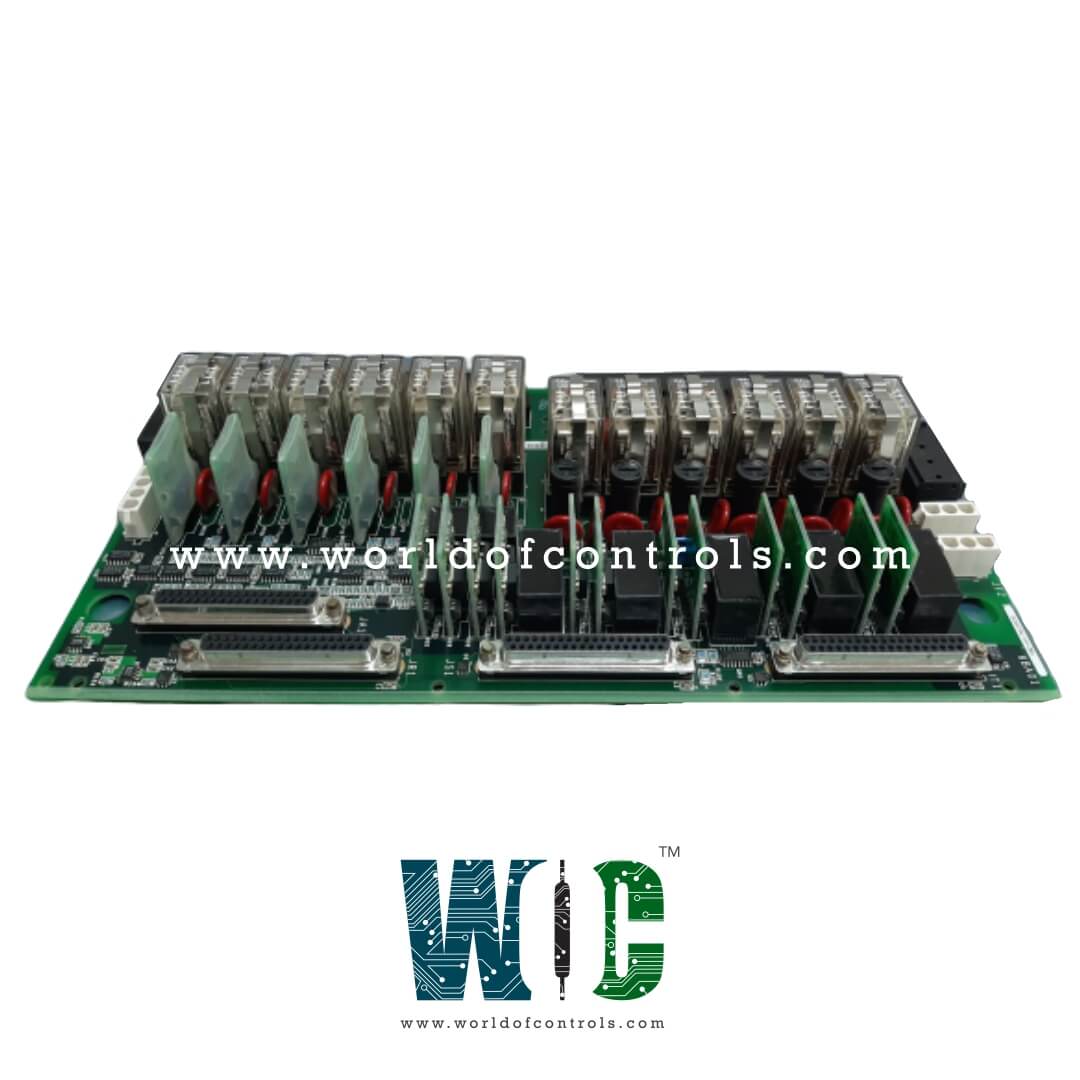SPECIFICATIONS
Part No.: IS200TRLYH1E
Manufacturer: General Electric
Country of Manufacture: United States of America (USA)
Size: 17.8 cm wide x 33.02 cm high
Technology: Surface-mount
Temperature Operating: -30 to 65oC
Product Type: Solid-State Relay Output Board
Availability: In Stock
Series: Mark VI
Functional Description
IS200TRLYH1E is a Solid-State Relay Output Board developed by GE. It is a part of Mark VI control system. It is a 12-output relay board that utilizes solid-state relays (SSRs) for all of its output circuits. Solid-state relays offer several advantages, including reliability, durability, and the ability to handle high-speed switching without mechanical wear.
Features
- Each of the 12 circuits on the board features isolated output voltage feedback. This feature enhances system safety and performance by providing clear and isolated feedback on the operational status of each relay output.
- The use of solid-state relays allows them to be certified for Class 1 Division 2 applications. This certification indicates that the board is suitable for use in hazardous environments where flammable gases or vapors may be present, but only in conditions where the risk of ignition is limited.
- Unlike mechanical relay boards that use form-C contacts, it uses solid-state relays, which are inherently more robust and reliable. Solid-state relays are known for their silent operation, fast switching times, and long lifespan.
- All 12 outputs on the board are single, normally open (NO) contacts. This differs from mechanical relay boards that often feature form-C contacts, which include both normally open and normally closed contacts.
- It does not include provisions for user solenoid power distribution. This means that while the board handles the relay outputs, it does not distribute power to solenoids or other external devices; this must be managed separately in the system design.
- Solid-state relays have no moving parts, which reduces wear and tear and increases the reliability and lifespan of the relay.
- Solid-state relays can switch on and off much faster than mechanical relays, which can be crucial in high-speed or high-frequency applications.
- Unlike mechanical relays that produce audible clicking sounds, solid-state relays operate silently, which can be beneficial in noise-sensitive environments.
Installation
- To install the relay board, begin by connecting the customer's 12 solenoids directly to the I/O terminal block mounted on the board. This terminal block has 24 terminals and accepts wires up to 12 AWG. Ensure that the terminal block is firmly secured by tightening the two screws provided.
- The board uses unidirectional DC relays, so it is crucial to connect the load with the correct polarity. Incorrect polarity can lead to improper operation or potential damage to the relays. Always double-check the polarity of your connections to ensure proper functionality.
- The board features a shield terminal strip located immediately to the left of each terminal block. This strip is attached to the chassis ground and is used for grounding shield wires. Proper grounding through this terminal strip is essential for reducing electrical noise and enhancing overall system performance.
- Before powering up the system, verify that all connections are secure and correctly configured according to the wiring diagram. Confirm that the polarity of all DC relay connections is correct, using a multimeter if needed. Properly connect the shield terminal strip to the chassis ground to minimize interference and ensure optimal relay board performance.
The WOC team is always available to help you with your Mark VI requirements. For more information, please contact WOC.
Frequently Asked Questions
What is IS200TRLYH1E?
It is a solid-state relay output board developed by GE under the Mark VI series.
How should I wire the solenoids to the board?
Connect the 12 solenoids directly to the I/O terminal block on the board. The terminal block can accept up to 12 AWG wires and is secured with two screws.
What are the specifications of the terminal block on the board?
The terminal block on the board has 24 terminals and accepts wires up to 12 AWG. It is held in place with two screws to ensure secure connections.
Why is polarity important when connecting the relays?
The board uses unidirectional DC relays, meaning they require the correct polarity for proper operation. Incorrect polarity can lead to malfunction or damage. Always verify the polarity before making connections.
